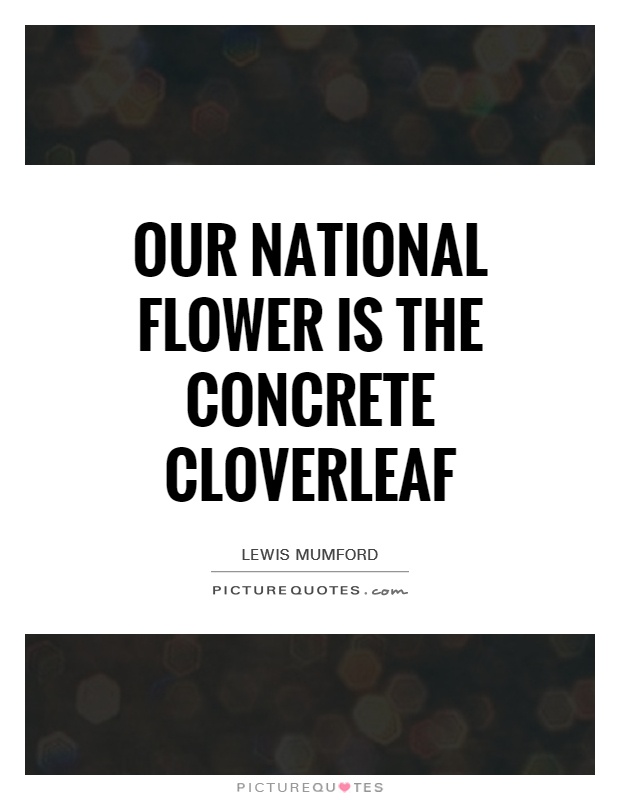Our national flower is the concrete cloverleaf

Our national flower is the concrete cloverleaf
In his seminal work, "The Highway and the City," urban theorist Lewis Mumford discusses the impact of infrastructure on the development of cities and the lives of their inhabitants. Mumford argues that the design and construction of highways, particularly the proliferation of cloverleaf interchanges, have had a profound influence on the urban landscape and the way people interact with their environment. He coins the term "concrete cloverleaf" to describe these ubiquitous structures that have come to symbolize the modern era of transportation and urban planning.Mumford's assertion that the concrete cloverleaf has become our national flower is a provocative statement that challenges traditional notions of beauty and symbolism. While most countries have a national flower that represents their natural heritage and cultural identity, Mumford suggests that in the United States, the concrete cloverleaf has become a more fitting symbol of our society's values and priorities. The proliferation of highways and interchanges has reshaped the American landscape, transforming once-rural areas into sprawling suburbs and connecting cities in a vast network of concrete arteries.
The concrete cloverleaf, with its geometric precision and utilitarian design, embodies the ideals of efficiency, progress, and mobility that have come to define American society. It is a symbol of our relentless pursuit of convenience and speed, as well as our willingness to sacrifice natural beauty and community cohesion in the name of progress. Mumford argues that the dominance of the concrete cloverleaf in our urban environment reflects a larger shift towards a mechanized, impersonal way of life that prioritizes individual mobility over collective well-being.
By likening the concrete cloverleaf to a national flower, Mumford challenges us to reconsider our relationship with the built environment and the values that shape our cities. He urges us to question the impact of our infrastructure choices on the quality of life for all citizens and to strive for a more sustainable and human-centered approach to urban planning. In doing so, Mumford's provocative statement serves as a powerful reminder of the complex interplay between technology, society, and the natural world in shaping the cities of tomorrow.












 Friendship Quotes
Friendship Quotes Love Quotes
Love Quotes Life Quotes
Life Quotes Funny Quotes
Funny Quotes Motivational Quotes
Motivational Quotes Inspirational Quotes
Inspirational Quotes